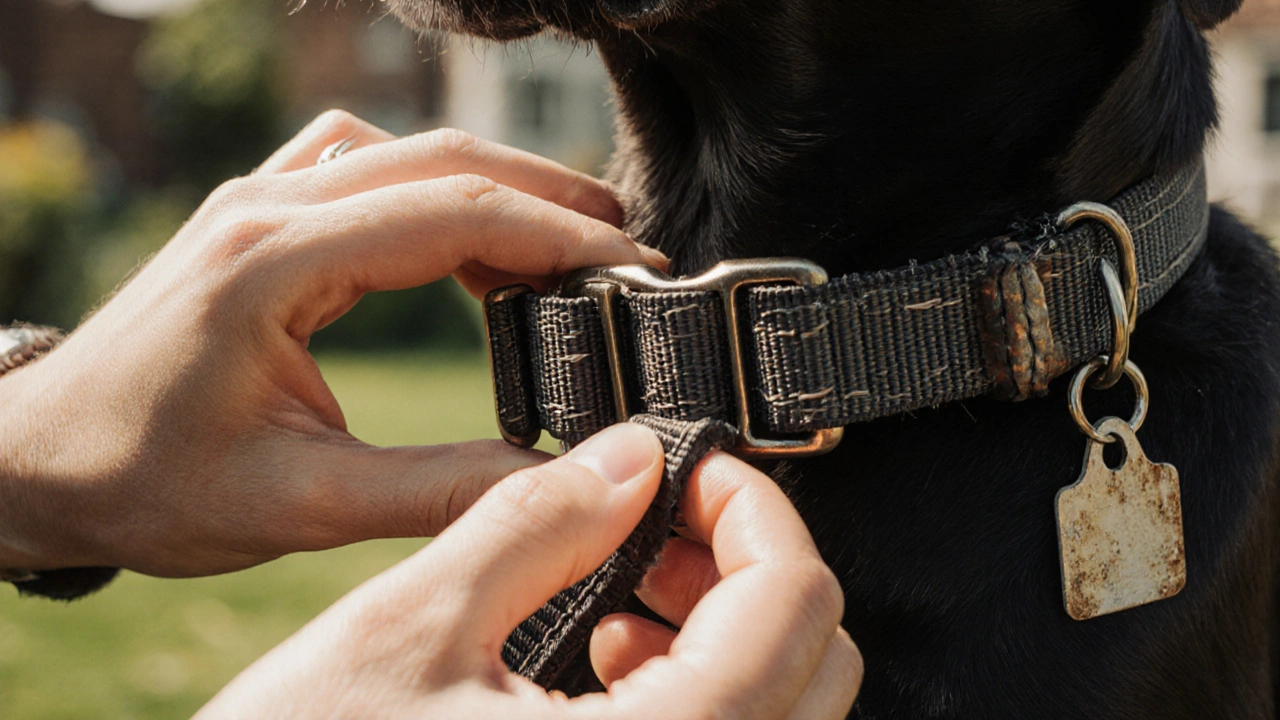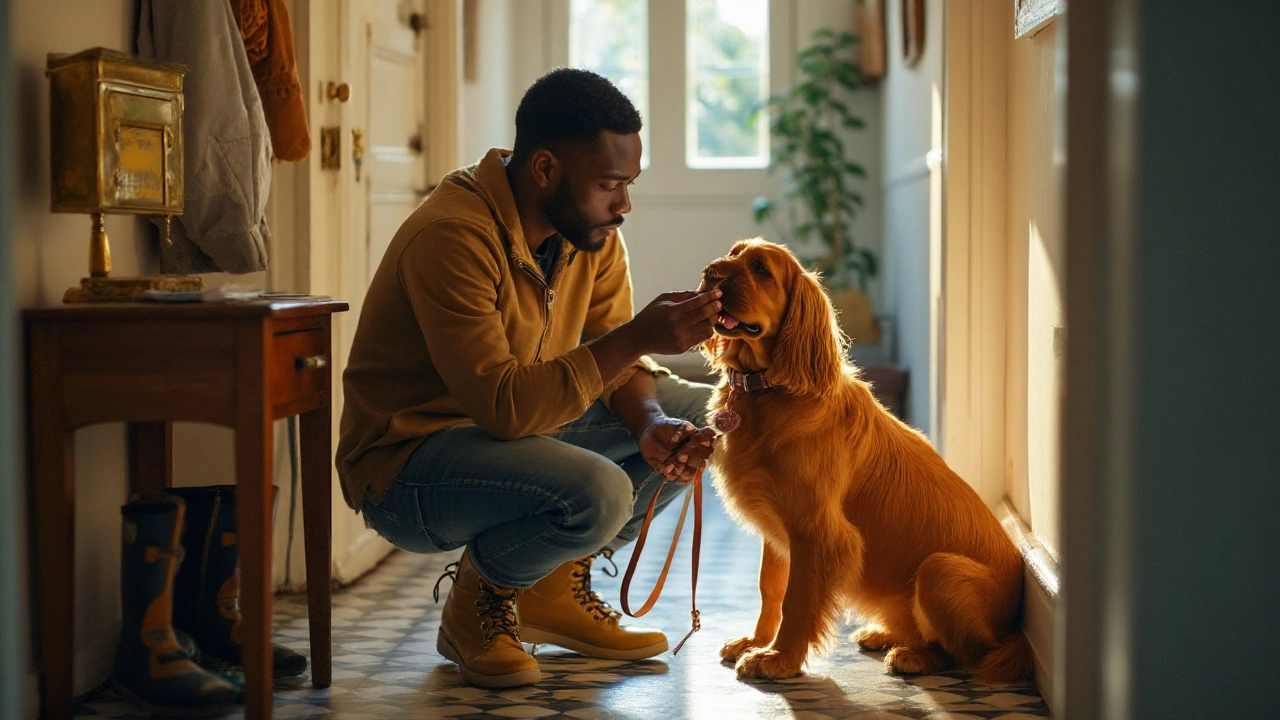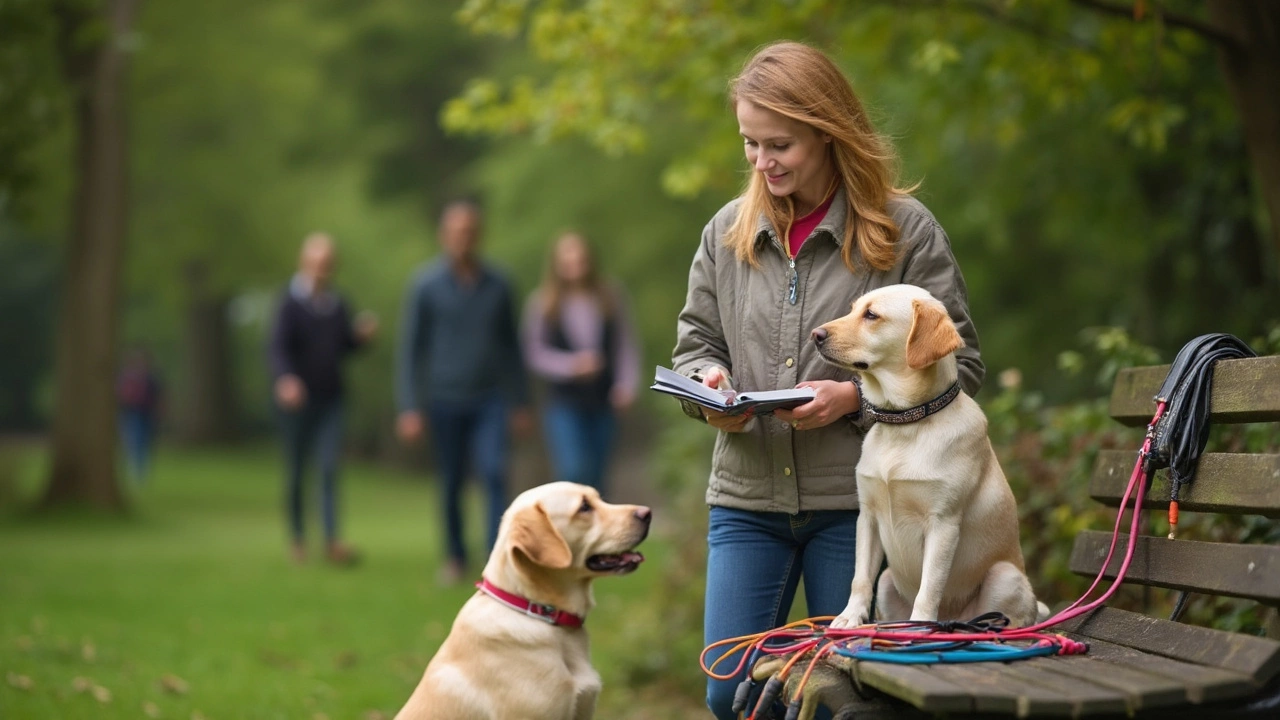Dog Collars – How to Pick, Use and Keep Them Safe
If you’re reading this, you probably own a dog and have wondered which collar is the best fit. The truth is, not every collar works for every dog. Size, breed, activity level and even the weather can change what you need. Below you’ll get straight‑forward advice on the main types, when to take a collar off, and a quick safety check you can do every day.
Common Collar Types and Their Uses
First up, let’s sort the collars you’ll see in shops. A flat nylon or leather collar is the classic everyday choice. It’s cheap, lightweight and great for attaching ID tags. If your dog tends to pull, a martingale (or “limited slip”) collar gives a bit more control without choking – it tightens just enough to stop the escape but loosens when the dog stops pulling.
Breakaway collars have a safety release that snaps open if the dog gets caught on a fence or branch. They’re handy for puppies or dogs that love to explore the countryside, but they’re not ideal for hunting dogs that need a secure hold.
Training collars come in several flavors: prong, choke, and shock. While some trainers swear by them, most vets warn they can cause pain or stress if used incorrectly. If you’re new to training, a simple front‑clip harness usually does the job without the risk.
Lastly, calming collars often contain pheromones or soothing scents. They may help a nervous dog, but they’re not a cure‑all. Pair them with proper exercise and a calm environment for the best results.
Safety Checklist for Everyday Collar Wear
Now that you know the options, make sure the collar you choose stays safe. Here’s a quick list you can run through each morning:
- Fit: You should be able to slip two fingers between the collar and your dog’s neck. Too tight can bruise; too loose lets them slip out.
- Condition: Check for frayed stitching, cracked leather or a bent buckle. A worn collar can fail when you need it most.
- Cleaning: Wash nylon collars in warm water and let them air‑dry. Leather needs a leather conditioner every few months.
- Purpose: Use a ID tag collar for walks, a training collar only during structured sessions, and a breakaway only when off‑lead in low‑risk areas.
- Nighttime: Some owners take the collar off at night to let the skin breathe. If your dog sleeps on a soft bed and the collar isn’t hurting, it’s fine to leave it on.
One more tip: keep a spare collar in the car or at the vet. If the first one breaks or gets tangled, you won’t be stuck scrambling for a replacement.
Choosing the right collar isn’t rocket science, but it does need a little thought. Think about your dog’s size, activity and any specific training goals. Test the fit, check the condition daily, and you’ll avoid most of the common problems that lead to injuries or lost dogs. With the right collar and a quick safety check, you and your pup can enjoy walks, training sessions and playtime with confidence.
- Morgan Ainsworth
- 0 Comments
Why Do People Hate Prong Collars So Much?
Prong collars cause pain, fear, and long-term harm to dogs-even when used "correctly." Learn why experts, veterinarians, and dog owners are rejecting them in favor of humane, science-backed training methods.
View More- Morgan Ainsworth
- 0 Comments
Is It Safe for Dogs to Wear Collars All the Time? Vet-Approved Guidelines
Is it safe for dogs to wear collars all the time? Learn vet-approved guidelines on collar safety, when to remove them, alternatives like harnesses and microchips, and how to prevent neck injuries and skin damage.
View More- Morgan Ainsworth
- 0 Comments
How Often Should You Replace Your Dog's Collar? A Practical Guide for Pet Owners
Learn when and why to replace your dog's collar for safety and comfort. Signs of wear, material differences, sizing tips, and expert advice for UK pet owners.
View More- Morgan Ainsworth
- 0 Comments
Should You Take Your Dog’s Collar Off at Home? UK Indoor Collar Safety Guide
Wondering if your dog should wear a collar indoors? Get a clear UK-based answer, step-by-step decision tips, safety checklists, and when to keep it on or take it off.
View More- Morgan Ainsworth
- 0 Comments
Collar vs Harness: What Do Vets Really Recommend for Dogs?
Curious if vets recommend collars or harnesses for walking dogs? Get the facts on comfort, safety, and health, so you can make the best choice for your furry friend.
View More- Morgan Ainsworth
- 0 Comments
Alternatives to Breakaway Dog Collars: What Works and Why
Curious about what to use instead of a breakaway collar for your dog? This guide explores the safest and most practical collar alternatives, how they work, and which dogs benefit from each style. You'll get tips on fit, safety, and choosing the right collar for your pet's habits. Save yourself from trial and error—get the facts you actually need. Every dog is different, so find out what's really best for yours.
View More- Morgan Ainsworth
- 0 Comments
Cesar Millan on Prong Collars: What You Need to Know
Curious about Cesar Millan’s take on prong collars? This article breaks down his thoughts, how he actually uses them, and what you should keep in mind if you’re considering one. Get practical advice and real-world tips to help you decide whether a prong collar fits your dog and training style. Learn when they can work, where things can go wrong, and what alternatives are out there. Know the facts before making a choice for your pup.
View More- Morgan Ainsworth
- 0 Comments
Should You Take Your Dog's Collar Off at Night?
Wondering if you should remove your dog's collar at night? This article delves into the pros and cons of taking off your dog's collar while they sleep. We explore safety, comfort, and hygiene aspects, offering insights for responsible pet ownership. Learn practical tips on when and why it might be beneficial to let your dog snooze collar-free.
View More- Morgan Ainsworth
- 0 Comments
Exploring the Efficacy of Calming Collars for Dogs
Calming collars for dogs are marketed as a solution for reducing anxiety and stress in canines. Pet owners often seek these collars with hopes of easing behaviors like excessive barking or restlessness. But do they genuinely work, or are they just another gimmick? This article delves into the science behind calming collars, reviews their benefits and limitations, and offers helpful tips for addressing dog anxiety.
View More- Morgan Ainsworth
- 0 Comments
The Hidden Dangers of Shock Collars for Dogs: A Humane Approach to Training
Shock collars, often marketed as effective training tools, pose significant risks to a dog's emotional and physical well-being. They rely on inflicting pain, leading to increased anxiety and aggression, which counteracts positive training outcomes. By exploring ethical and stress-free alternatives, dog owners can build stronger relationships with their furry companions. The article delves into the psychology of dogs, humane training methods, and debunks common myths associated with shock collars.
View More









